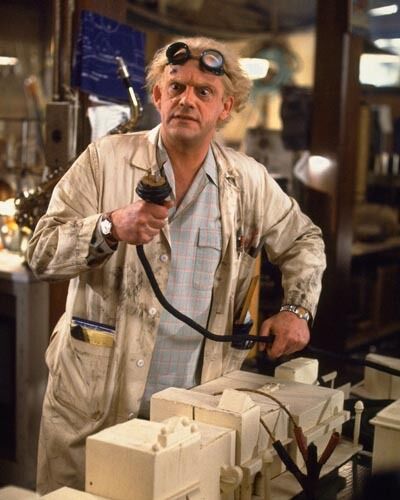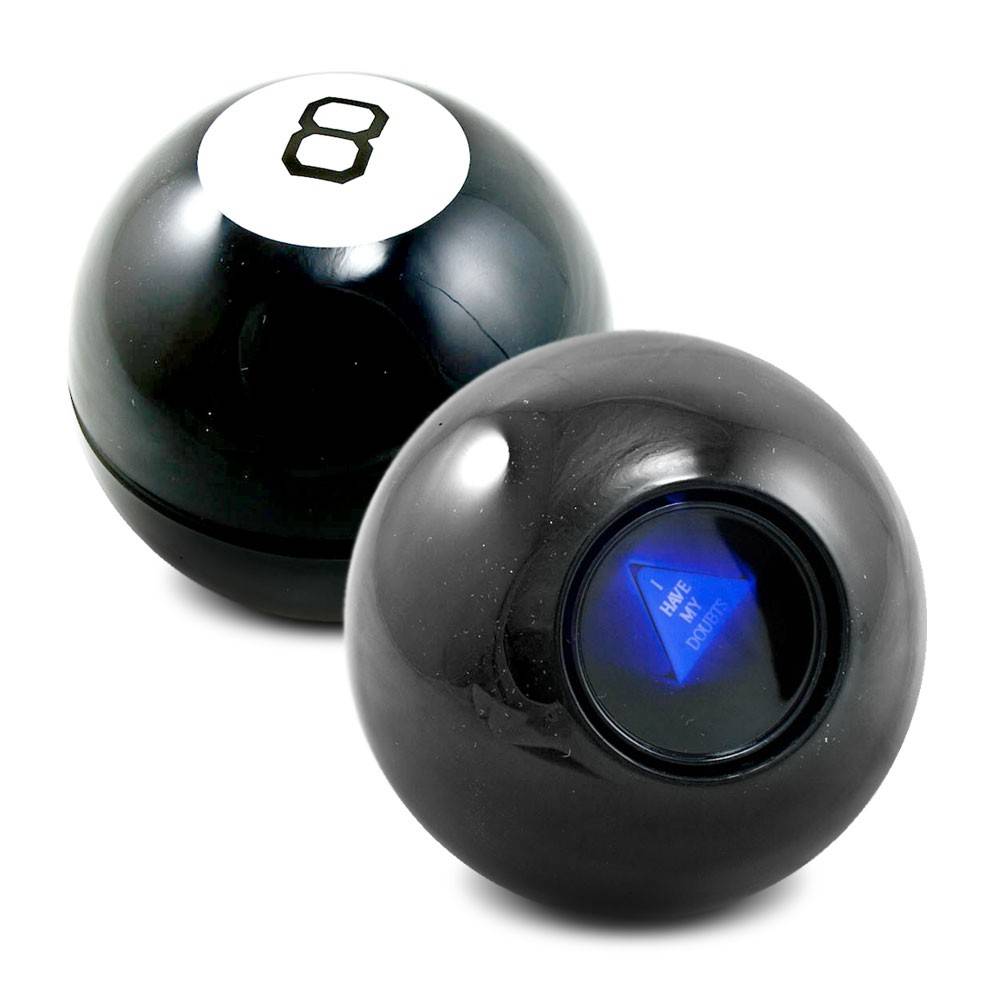- I call ‘BS’ on all this crap about cables making a difference in how an audio system actually sounds. Really, I mean who do these cable companies think they are fooling?
- Cables are nothing more than audio jewelry.
- All this mumbo jumbo about skin effect, capacitance filtering, dielectric absorption, time alignment, single grain copper wire extrusion, and all other sorts of scientifically unproven and unvalidated bull is absurd. How this stuff makes an audio system sound ‘better’ is pure and unadulterated hyperbole.
- Impedance matching between components and resistance of speaker wire are obvious electrical engineering principles that are easily demonstrated both objectively by mathematics and subjectively by listening. But, can someone please tell me, where is there any scientific correlation between cable measurements and how they directly influence what we hear?
- Always lots of promises, but never any proof. Or if there is proof, as in so called unbiased ‘measurements’, the tests are conceived and performed in a manner so as to produce a result that can be claimed to support an otherwise speculative assertion.
- A good mechanical connection is all that is required. Period.
- Nothing but snake oil salesmanship and tactics used to confuse or even worse, intentionally mislead consumers.
Recent events have afforded me some extra time to dwell on things. Over the course of my wanderings, I have heard countless statements like the ones above. Some are, or were, my own (yes, I reserve the right to change my mind from time to time). Some are from very nice folks I have met in my travels over the years. And of course, others were found on the infamous internet. As a designer and partner at an audio cable company, these statements are ubiquitous as hearing “Jazz at The Pawnshop” at an audio show, and about as likely to be resolved as calculating the value of π (Pi) to the last digit.

So first, please allow me to set forth what I see as basic, universally accepted principles.
Everyone has their own belief system. A belief is the acceptance that a statement is true or that something exists. Each of us decides for ourselves what we want to believe, regardless of whether it’s subjectively or objectively based. Likely we will change beliefs over the course of our life. And over that time some will insist that the statements they accept and believe are factually backed by empirical evidence. But even the most basic of scientific laws is still at its essence nothing more than a statement which a community of scholars have elected to accept as true based upon observations, peer review and statistics, which themselves are not free of bias or error. Plus, we can never prove a negative. We cannot prove the statement that there are no pink elephants. The best we can do is say there is no valid evidence that one has ever been seen.

So then, how can anyone prove a belief? Well, you can’t. Beliefs are totally faith based.
Our beliefs are shaped in significant part by our own personal experiences and environments. While many of us share common beliefs, each individual’s belief structure is as unique as that person. I am reminded of ‘The Blind Men & the Elephant’ parable where six blind men each examine an elephant. And all six of them come to vastly different conclusions of just what the exact same elephant must be.
So, with that said, along with going certifiably loony from being cooped up alone in the house for over 8 weeks, I have decided to interview myself.
Well, Billy, thanks so much for taking the time to do this interview with me.
Yeah, first thing is….. you need to back off a little. This stick I have is exactly six feet long and I can still poke you with it.
Ouch! Whoa, OK. Sorry about that. I’m moving back. If it’s any consolation, my mask is an N95.
Thanks, that’s better.
Anyway, so Billy, do you truly believe cables can make a difference in how an audio system sounds?
Yes, I do.


Did you always believe this?
No. In fact I was more than a little pissed off when I was compelled to change my mind. It happened at an earlier and financially lean time during my involvement in the hobby when the last thing I wanted to do was spend money on of all things, more frick’n cables!
Why didn’t you believe it at first?
Speaking of firsts, how about you put these nitrile gloves on before we go any further?
Now what was your question? Oh, yeah. There were many reasons why I did not believe. When I was a young engineer, I had never seen or heard any evidence where the type of wire had any audible effect on a circuit. For example, aluminum wire obviously could not handle as much current as the equivalent gauge of copper before it melted. This happens because as resistivity goes up so does the amount of heat it generates. The resistivity of copper is around 17 nΩ·m while for aluminum it’s about 26 nΩ·m. And the melting point of aluminum is near 1100 degrees F vs. for copper at about 2000 degrees F. But within a certain load range, both materials will perform identically within the same circuit. The electrons will flow and the device will follow a predicted behavior. I did not need to be a rocket scientist to figure this out.
I believed anyone who said they could hear a difference did so because of bias. They felt compelled to hear a difference in order to justify spending their money on expensive cables. This is what’s known as expectation bias. Or, someone wanted you to believe it in order to sell something you did not need. And some go so far as to state that if a person thinks they hear a difference, whether one exists or not, what harm has been done? I think they call that pseudoacoustics. The person is experiencing more satisfaction from their system as a result; therefore, the money spent is justified. Really? Surely you have seen those pet rocks or little bowls with water that are supposed to enhance your experience when properly placed in your listening space. Finally, there is one of my all-time favorites of putting a photo of your system in a Ziploc bag and place it in your freezer! Really? Does the flavor of the ice cream that it’s next to make a difference too?
From my perspective at that time, the elephant looked exactly as I expected it to. And I was not about to be somebody’s fool when it came to cables.

Then what changed your mind, Billy?
More years ago, than I care to count, I was at a local get-together with some other audiophiles I had recently met through the AudiogoN forum. Most of us brought CD players to put into the host’s home system to compare them by playing the same tracks from a CD. There was no denying they all sounded different. It all seemed harmless enough. But then somebody said they wanted us to hear an RCA interconnect they recently purchased. I kept my thoughts to myself. But in my mind, I rolled my eyes and said to myself, “Oh boy, here we go”.
Up until this time, I had never purposefully tried to compare two different RCA’s back to back. But I had purchased and installed what I felt were ‘better’ RCA cables based on build quality. Why? Well because the ‘engineer’ in me said there was no harm in getting cables that obviously had better build quality, had conductor wire with a larger cross-sectional area, and were more robust and durable with better connections. All these differences improve mechanical reliability and assured I would be less likely to have issues because of too high of a resistance, insulation breaking down, or connections degrading and failing over time. Up until this point I had never even compared or replaced an OEM power cord. NEMA and IEC specs all said my OEM cables were capable of handing the current and voltages just fine. I felt confident there was nothing to be gained by spending more than $50 on a set of interconnects or $120 on speaker cables.

That day was a paradigm shift in my belief system. Just like post Covid-19, the world would never be the same. And the elephant took on an entirely new appearance.
What bothers you most what people say about audio cables?
I am far too old and thick-skinned to be bothered by anything people say. But what does sadden me are the naysayers who have never made an honest effort at really listening to different cables. Some preach on high about listener bias, complain of faulty and deceptive test methods whether double-blind or otherwise, provide anecdotal stories of how cables don’t make any difference, and spout the physics of electromagnetism. All as if access to a textbook or Wikipedia makes their statement indisputable. Look, if you want to describe the elephant, then please, at least try touching the entire creature before coming to any conclusions.


Why do you give restrained credence to published measurements of cables?
There is joke about accountants I heard ages ago, yet the older I get the more unpretentious it has become. It goes like this:
Business owner Sally: I really like my new accountant.
Business owner Ed: Oh really, why?
Sally: Because when I asked him how much one plus one equals, he answered, “It depends, what would you like it to equal?”
Here is another way to look at this question. Many high precision industries employ very stringent, Six Sigma quality systems which are designed to hold manufacturing capability to 3.4 rejects per every one million products produced. These very same quality processes allow for a built-in error in their measurement systems of 30%! This is because no two identical instruments will measure exactly the same every time. And there are variables inherent in every measurement system such as temperature, humidity, pressure, variations in how operators are taking the measurement, multiple test fixtures, etc. So, all the variables are statistically calculated and the total resultant error in the process is determined to assure the variability is still within the overall required tolerance for the given measurement. Just think of it as headroom or a safety factor in what was otherwise assumed to be an accurate measurement process.
And here is an epiphany for you. If we make cable “A” and it measures with a lower impedance, inductance, and/or lower resistance than cable “B”, it does not guarantee cable “A” will always sound better.
Can you provide measurements on your cables?
We can. But they would be our measurements. So, their validity is challenged by the fact that our test methods and equipment may be quite different than how someone else measures the same characteristic. There is no true benchmark for comparison. However, we are in the process of having an independent source design the tests and perform measurements on our products. When completed, we will publish the unabridged report.


Is there a reliable correlation between measurements and how a cable will sound?
If there is, I wish someone would share this information with me. For example, loop back inductance for speaker cables is relatively easy to measure, but the correlation with sonics is not fully established. It’s thought that the lower the loop back inductance per for a cable, the clearer the top end and the cleaner, more defined the transient reproduction will be. But despite our best efforts, we have not been able to find concrete evidence of how or which measurements reliably predict the sonics of a cable. And since you are looking at me while I make this statement, please take note that my nose has not grown the slightest bit. But I think I am losing my sense of smell? Does my head feel warm to you? Wait, never mind, just stay back there.
Can you predict how various designs and combinations of materials will sound?
To some extent, yes. In general, silver tends to free up clarity and detail in the higher frequency. Copper is generally effective in the lower spectrum. Mitigating noise with shielding can be effective at revealing nuances like resolution of low-level detail, overtones, subtle variations in staging, and textures that make music feel more realistically rendered. Images become more solid, three dimensional, and present. So yes, there are some generalizations about materials and measurements that we typically use to help us understand what we are hearing in a cable, but they are just that. Generalizations. And let’s not forget what Mark Twain is often credited for saying, “All generalizations are false, including this one”.


So, Billy, do you know exactly why different designs and combinations of materials sound different?
If I did, I would be a very wealthy man with the title of Nobel Laureate. Finding a correlation between measurements and what the human ear hears would be like discovering the Rosetta Stone. And stop calling me Billy. I know who I am.
OK, this is all starting to sound like the same bogus runaround we hear all the time about audio cables.
Look, all kidding aside, I am the first one to admit I cannot explain all the possible sonic effects associated with different electrical principles. And here is where the real technical mumbo jumbo starts. Most examples you hear about are likely an oversimplification of the different interactions that may or may not affect the types of electrical signals we are dealing with in audio. For example, energy is not just energy. There is thermal energy, radiant energy, electrical energy, motion energy, sound energy, elastic energy electromagnetic energy, and so on. Each has its own fundamental characteristics. And then there is capacitive reactance, which is neither capacitance nor reactance, but rather the resistance due to capacitance which is impedance in AC circuit. And then there’s stuff at the CERN super collider that I would not have the slightest inclination of understanding, but could spout off as though I did.
We don’t pretend to have a secret sauce, magic fairy dust, or a mystical key that unlocks secrets of the physical universe. We started out as newbies making cables for ourselves in a garage over six years ago. Since that time, we have put in many, many long and tedious hours of our own time and hard work. We have taken electrical and mechanical engineering principles and applied them to certain conductors, listened closely, developed and fabricated more variations based on our understanding of how the physics works, and then listened again. As an example, we have found that noise is a primary culprit of distortion. And our designs are focused on mitigating as much noise as possible. Some of the solutions we incorporate are similar to what communication and military industries use when noise reduction is a primary design requirement. So, was it just trial and error or blind luck that we stumble on designs that work well? No. Did we just plagiarize what was already out there? Not at all. We have made our design decisions based on fundamental research (prepared our minds) and applied it properly using industry-standard best practices in both R&D and engineering. We have a saying about luck. “CHANCE FAVORS THE PREPARED MIND”.
Sometimes it will happen that we develop a design and find improvements in the sonics. Yet there is no measurement that we can make which explains why. But we keep trying to find a way to measure it. And we never go off saying we just came up with the latest and greatest solution to cable design and give it some goofy name and a bogus explanation as to why we believe it works. It’s not a balancing act of half-truths. It’s a balanced approach between designing, measuring and listening.


OK, just for arguments sake, let’s say cables make a difference. My ears are old. I can’t hear as well as I used to. If there is a difference it would be so slight, I would never be able to hear it.
Please don’t be fooled by this myth. Yes, for old farts like us, our ability to hear typically degrades, especially in the higher frequencies. We may develop deficiencies over many parts of the normal 20 to 2k range in our life time. But for most of us, we will still retain the ability to discern the quality and nuance of what we can still hear. Now stop whining. I can’t tolerate whiners!
So then, does all this mean it’s OK to believe in those little pet rocks, and keep a photo of your system in the freezer?
Pet rocks? Hey, I fully admit to being a bit odd and a curmudgeon, but I am not stupid!
I do, however, keep that picture in my freezer, you know, just in case.

Well, Billy, thank you so much for your time. This has been a truly enlightening experience for me.
Your most welcome, Billy. Now just remember not to touch anything on your way out.
